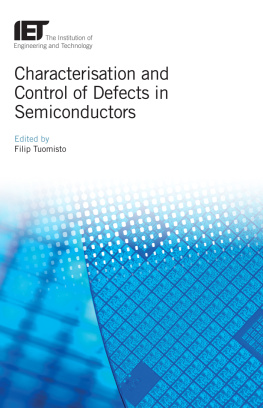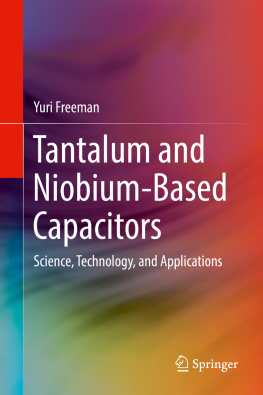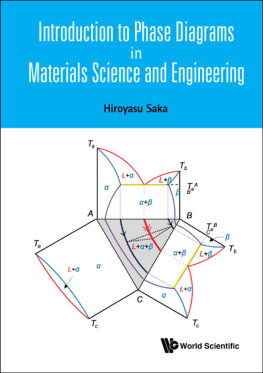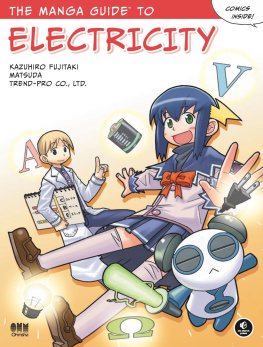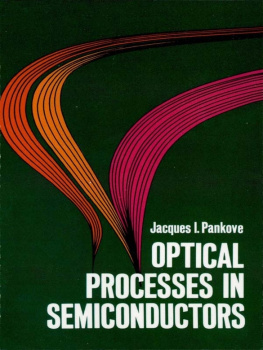GREAT DISCOVERIES IN SCIENCE
Semiconductors
Grace Murphy
Published in 2018 by Cavendish Square Publishing, LLC
243 5th Avenue, Suite 136, New York, NY 10016
Copyright 2018 by Cavendish Square Publishing, LLC
First Edition
No part of this publication may be reproduced, stored in a retrieval system, or transmitted in any form or by any meanselectronic, mechanical, photocopying, recording, or otherwisewithout the prior permission of the copyright owner. Request for permission should be addressed to Permissions, Cavendish Square Publishing, 243 5th Avenue, Suite 136, New York, NY 10016.
Tel (877) 980-4450; fax (877) 980-4454.
Website: cavendishsq.com
This publication represents the opinions and views of the author based on his or her personal experience, knowledge, and research. The information in this book serves as a general guide only. The author and publisher have used their best efforts in preparing this book and disclaim liability rising directly or indirectly from the use and application of this book.
CPSIA Compliance Information: Batch #CS17CSQ
All websites were available and accurate when this book was sent to press.
Library of Congress Cataloging-in-Publication Data
Names: Murphy, Grace (Nonfiction author)
Title: Semiconductors / Grace Murphy.
Description: New York : Cavendish Square Publishing, [2018] | Series: Great discoveries in science | Includes bibliographical references and index.
Identifiers: LCCN 2016058607 (print) | LCCN 2017003784 (ebook) | ISBN 9781502628718 (library bound) | ISBN 9781502628725 (E-book)
Subjects: LCSH: Semiconductors.
Classification: LCC TK3301 .M87 2018 (print) | LCC TK3301 (ebook) | DDC 537.6/22--dc23
LC record available at https://lccn.loc.gov/2016058607
Editorial Director: David McNamara
Editor: Caitlyn Miller
Copy Editor: Michele Suchomel-Casey
Associate Art Director: Amy Greenan
Designer: Lindsey Auten
Production Coordinator: Karol Szymczuk
Photo Research: J8 Media
The photographs in this book are used by permission and through the courtesy of: Photos credits: Cover .
Printed in the United States of America
An integrated circuit chip, made from a semiconductor, threads the eye of a needle.
SEMICONDUCTORS
Introduction: A Hidden Revolution
Semiconductors are everywhere. They are at the electronic heart of cell phones, laptops, airplanes, smartwatches, automobiles, and even many washing machines. We dont often think about them, and we may not even use the word semiconductor. But without semiconductors, the world as we know it today would be a very different place.
The definition of semiconductor is very simple: a material whose electrical conductivity is between that of a conductor and that of an insulator. That doesnt sound very dramatic. Yet the revolution that started when scientists began to understand the implications of that idea was far from simple, and so was harnessing the power of semiconductors. Even today, the massive power and endless uses of semiconductors are still being explored, understood, and applied.
The story of semiconductors begins with Michael Faraday, sitting in a laboratory in London, trying to understand how electricity works. Like Benjamin Franklin, in his famous experiment with the lightning rod, Faraday conducted investigations to help him understand the characteristics of different materials and how electric charges were transmitted. He discovered that one of the substances that he was working with, silver sulfide, had a peculiar property. Its ability to conduct electric charges increased when it was heated. Thus, the first semiconductor was identified.
Faradays observation began an exciting journey, one that includes the discovery of the structure of the atom and moves into quantum physics and beyond. That journey, which is still unfolding, has resulted in an explosion of theoretical knowledge about the nature of the universe and practical applications of that knowledge in our everyday lives.
The journey takes us through the nineteenth century, when scientists observed more about the properties of semiconductors but still did not understand them. At the same time, other developments in the uses of electrical currents led to significant changes in society. The invention of the telegraph transformed communication. The vacuum tube became the basis of radioelectronics. Semiconductors, however, did not seem to have a place in these developments.
Yet some scientists continued to work with these mysterious materials. J. J. Thomsons identification of electrons as a component of atoms contributed to the understanding of semiconductors. In Russia, Abram F. Ioffe published a book on semiconductors. In the 1920s and 1930s, scientists continued to develop greater understanding of the fundamental physics of semiconductors. Vacuum tubes, until then at the center of radioelectronics, were showing their limitationsthey were too slow, they were too large, and they burned out too quickly. Semiconductors finally showed their potential.
Semiconductors, and the information and communication revolution they created, first took concrete form at Bell Laboratories with the invention of the transistor in 1947. Then, in 1958 in Santa Clara Valley (soon to be called Silicon Valley), the integrated circuit, containing thousands of transistors in a single small wafer, was invented. Shortly thereafter, the microprocessor, with the ability to store information and process programmed instructions about how to handle that information, was created.
Tens and eventually hundreds of companies were founded that used and improved the new technologies. Computers became faster and smaller, and these machines, which originally occupied enormous rooms, fit first in a home and then finally in a pocket. Most devices we can think of use semiconductor technology to improve their capabilities and extend their usefulness. Cars, trains, and planes all use semiconductor chips. Microwaves, stoves, and refrigerators have semiconductor components. Digital cameras and GPS systems use semiconductor parts. And semiconductor-based cell phones have become the indispensable accessory for everything we do.
We may not talk much about semiconductors, but they have changed the way we can talk. Semiconductors have allowed us to communicate easily with people on the other side of Earth and even people in outer space. They have changed the form of messages we send from letters that took weeks or even months to transmit to words and images that can go around the globe in an instant.
The story of semiconductors is the story of our modern age, and it is a truly momentous tale.
Cell phones link us together today, but communication hasnt always been so simple.
CHAPTER 1
The Problem of Information
W e live in the Information Age. We have access to endless amounts of information, and we have an enormous variety of ways to exchange that information. We can call a friend, watch television, download music, or read a book. But the ability to get new information and to share our knowledge wasnt always this easy. This chapter looks at how the transmission of information has changed over time and how the semiconductor came to play an integral role in that exchange.
Next page
